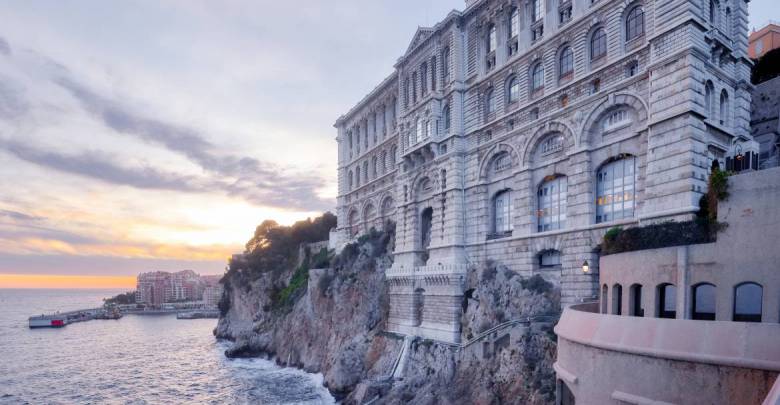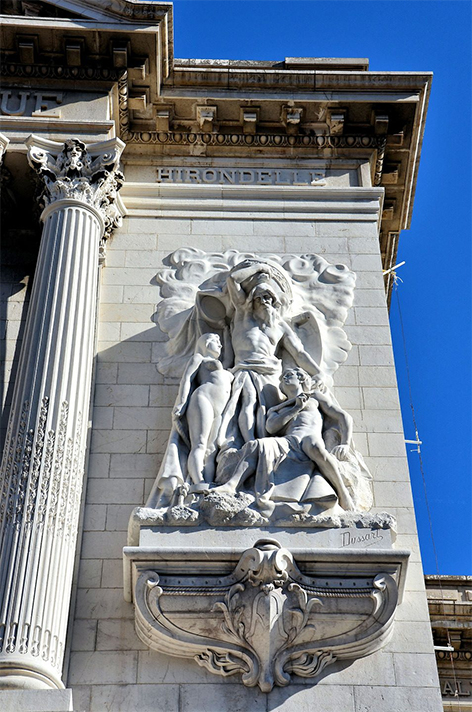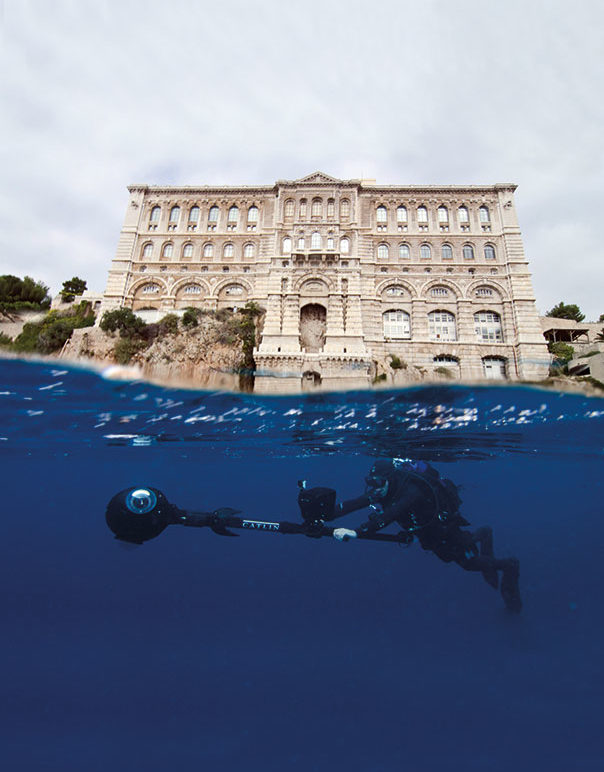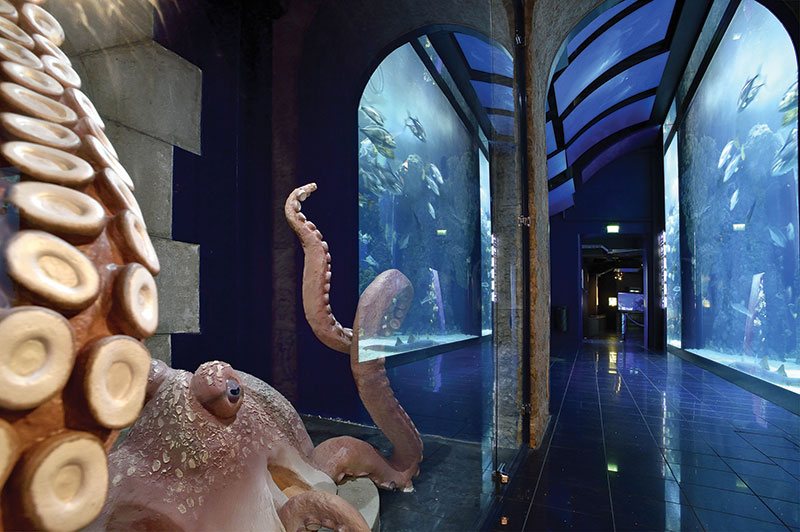
The museum is built into the cliffs.
Image courtesy of: Hello Monaco
No one needs an additional reason to visit Monaco… however if you are looking for one, look no further than Monte Carlo’s Oceanographic Museum. The museum was founded by Prince Albert I in 1910; the mission was to help oceans become more “known, loved, and protected.”
The Prince loved the sea; as a navigator and predecessor of oceanographic science, he was a part of 28 scientific explorations. His multiple voyages across the Atlantic Ocean and the Mediterranean Sea were innovative and pioneering. In addition, the Prince had advanced oceanographic ships at his disposal and he was always assisted by a team of scientists; among which were biologists, zoologists, botanists, and geographers.

The central part of the facade contains works by the sculptor, Louis Gustave Dussart. On the left side, Progress is showing coming to the aid of Humanity and on the right side, Truth reveals the forces of the world to Science. These massive pieces of ornamentation are made of Brescian limestone. A 26-foot tall figure of an old man resembling an ancient Greek sea god and the statement, “Truth in Science revealing the forces of the World” are prominently displayed. Finally, a walrus head is the keystone of the central window.
Image courtesy of: Encircle Photos
The Oceanographic Museum is basically housed in a palace… the historical masterpiece built in French neoclassical style by the French architect, Paul Delefortrie. For its construction, 100,000 tons of stone from the La Turbie region were needed. The impressive and imposing building sits elegantly along a cliff that extends for nearly 280 feet. The location makes it seem as though the building’s bottom is almost touching the sea below.
The 330-foot long facade is built from La Turbie limestone with ornamentation that centers around marine life: fish, waves, seaweed, octopus, ropes, and shellfish, among others. The ornamental moldings are engraved with the names of twenty ships that were specifically chosen by Prince Albert I. Interestingly, those names come from a longer list that was conceived by the museum’s first director and consummate collaborator of the Prince’s, Dr. Jules Richard. Not to be outdone, in 1975, the famed Jacques Cousteau served as the institution’s director.

The XL Catlin Seaview Survey exploring the sea near the Museum.
Image courtesy of: Amura World
The museum took eleven years to build due to the founder’s forward thinking initiatives. Following his great-great grandfather’s lead and sharing his commitment to adventure and environmental causes, Prince Albert II continues to be outspoken in the field of environmentalism and a continuing advocate for ocean conversation. He was quoted (courtesy of Institut Oceanographic), Prince Albert I, my great-great-grandfather, wanted Monaco to create an Oceanographic Institute; with a clear roadmap: to make people love, know and protect the oceans. Today this vision shows all its reverence, its modernity and its strength.”
Prince Albert II’s commitments have not gone unnoticed; he was awarded the coveted SeaKeeper Award for his encouragement for worldwide research. The museum’s director, Robert Calcagno said (courtesy of Yachts International, 2011), “A few years ago, we held a two-day conference with more than 200 researchers and scientists from 60 different countries to discuss the ocean’s acidification. The scientific consensus of that conference was a unilateral recognition that the oceans are absorbing greenhouse gas—CO². A certain amount of CO² in the oceans is perfectly fine, but an unfortunate byproduct of those gasses means that the oceans are getting an excess of acid, which is highly detrimental.” In 2009, Prince Albert II, as head of state, presented that important message–the “Monaco Declaration of Acidification”–to the rest of the freethinking world.

Walking through the galleries make visitors feel as though they are submerged in the sea.
Image courtesy of: Amura World
Inside the 70,000-square-foot museum, more than 6,000 specimens of Mediterranean and natural habitat reside. There are also 300 invertebrates and over 100 different types of coral. However, perhaps the most impressive display is the Shark Lagoon. The 20-foot deep tank contains 120,000 gallons of sea water where several shark species swim about freely.
Prince Albert II hoped that by providing this sort of “human interaction” with the sharks, much of the unfounded fear that is related to the species will disappear. An ongoing exhibition titled, “From Myth to Reality… Beyond the Misunderstanding” hopes to dispel the image of “Jaws” that is commonly associated with sharks. The hope is that people will see the fascinating species in a different light and as vital to the world’s ecosystem.

Works by Philippe Pasqua are on display at the museum.
Left- “The Mirror Effect,” 2017. Aluminum Megalondon jaw. Height: 13 feet, Length: 13 feet.
Right- “Who Should Be Scared,” 2016. Stainless Steel. Height: 33 feet
Image courtesy of: Dream Idea Machine, photographed by: Martin Delpozo
Prince Albert I understood the need to combine art and science as a way to help people understand the world’s oceans. Over the past few years, the museum has begun to present paintings and sculptures by some of the world’s top artists. The French artist Philippe Pasqua created twelve large-scale works explaining his thoughts in regards to the preservation of nature and the oceans. The collection, Borderline, was exhibited at different areas of the museum. Courtesy of Monaco Life, “Mr Pasqua’s work questions viewers about their relationship to nature, death and rebirth, while also confronting the current challenges of protecting biodiversity.”